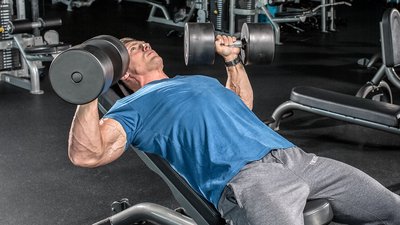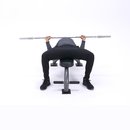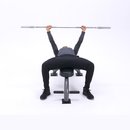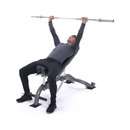Your hopes of building a muscular chest like the men and women you see on Bodybuilding.com isn't limited by your dreams. Most often, it's derailed by a poorly constructed routine that gets followed inconsistently.
I'm going to fix that right now by giving you a pair of great mass-building chest workouts geared for beginners. I'll also explain where to insert them into your training split, how often you should do them, and how to know when you're ready to move up to the next level.
While I call these "beginner's workouts," they're not appropriate for a beginner who has never grabbed a barbell. If you're a newcomer with less than two months' experience, learning movement patterns and making neurological adaptations are more important than figuring out how much you can bench.
Start with my Beginner's Guide to Resistance Training for now, and come back in a few months once you've become more comfortable with the basics of lifting.
What Makes A Great Beginner's Mass Workout?
The most important elements of a beginner's workout are the exercise selection and the rep ranges you perform. The biggest flaws in most beginner's workouts are using too many machines and using too much weight.
You may feel like you're not "ready" to bench, but it's important for beginners to focus on big multijoint movements that demand you stabilize a loaded barbell. These exercises recruit a larger degree of muscle mass and allow you to lift much heavier weights, which provides a hormone-boosting stimulus that's missing from single-joint moves. They also train your many small stabilizer muscles, which machines aren't going to touch.
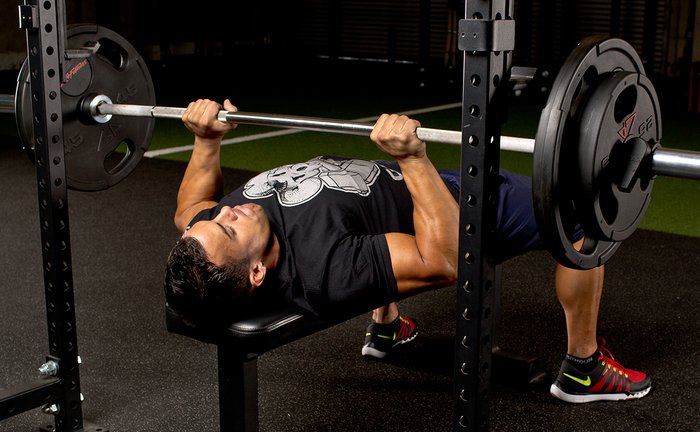
Every beginner’s workout should start with a multijoint exercise, like the bench press. Multijoint exercises involve both the shoulder and elbow joints, as well as the muscles that attach to them.
A good rep range is one that allows you to get the feeling of heavy weight while still racking up plenty of volume. I see far too many beginners performing grueling sets of 3-5 reps that they're clearly not ready for. That kind of strength work should only come after you've built up a foundation in the tried-and-true muscle-building rep range of 8-12 reps.
These two workouts may not look like a lot—after all, each one is just three movements—but their simplicity gives you a lot of flexibility in how you use them. Plus, each one hits the pectoral muscles from different angles, ensuring that you'll get balanced growth.
Meet Your Next Program
Perform the two workouts in two successive phases of 6-8 weeks. My recommendation is to include the workout as part of one of two splits that I've found to be particularly successful for beginners:
Split 1
- Day 1: Upper body
- Day 2: Legs/lower body
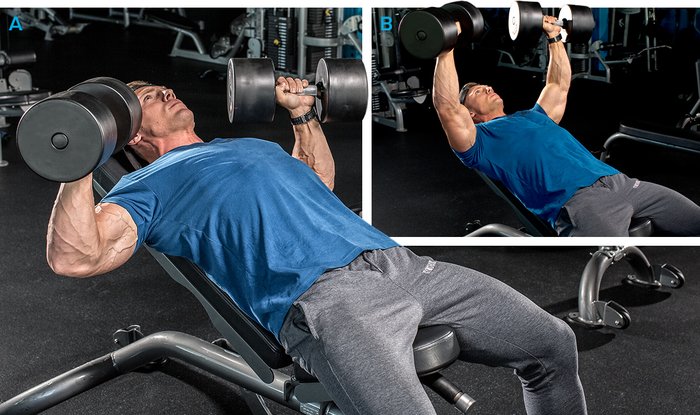
Incline Dumbbell Press
Split 2
- Day 1: Legs
- Day 2: Pulling muscles (back, biceps)
- Day 3: Pushing muscles (chest, shoulders triceps)
Both of these approaches allows you to increase the amount of work you do for each muscle group while giving each more time to recover. You'll repeat each workout about once every three days instead of three times a week. Now for the workouts!

BodyFit
$6.99/month- 2,500+ expert-created single workouts
- 3,500+ how-to exercise videos
- Detailed workout instruction
- Step-by-step workout tips
- Training at gym or at home
- Access to Workout Plans
- Access to Bodyfit App
- Store Discounts
Already have a Bodybuilding.com account with BodyFit? Sign In

What comes with BodyFit?

- Instructional Videos
Don't risk doing a workout improperly! Avoid injury and keep your form in check with in-depth instructional videos.

- How-to Images
View our enormous library of workout photos and see exactly how each exercise should be done before you give it a shot.

- Step-by-Step Instructions
Quickly read through our step-by-step directions to ensure you're doing each workout correctly the first time, every time.
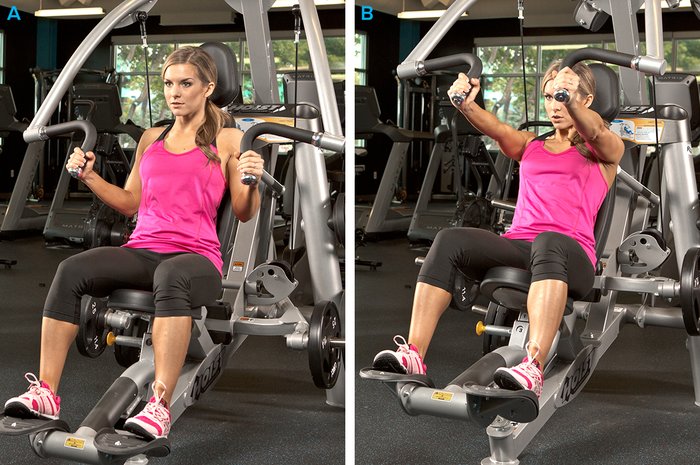
Flat-Bench Machine Press

BodyFit
$6.99/month- 2,500+ expert-created single workouts
- 3,500+ how-to exercise videos
- Detailed workout instruction
- Step-by-step workout tips
- Training at gym or at home
- Access to Workout Plans
- Access to Bodyfit App
- Store Discounts
Already have a Bodybuilding.com account with BodyFit? Sign In

What comes with BodyFit?

- Instructional Videos
Don't risk doing a workout improperly! Avoid injury and keep your form in check with in-depth instructional videos.

- How-to Images
View our enormous library of workout photos and see exactly how each exercise should be done before you give it a shot.

- Step-by-Step Instructions
Quickly read through our step-by-step directions to ensure you're doing each workout correctly the first time, every time.
Notes:
- Start out light until you have the form down perfectly, then start using more challenging weights.
- The sets listed are all working sets. Perform as many warm-up sets as you need, but never take them anywhere near muscle failure.
- After warm-ups, choose a weight that allows you to approach muscle failure by the target rep listed. Adjust the weight on follow-up sets if necessary.
- The rep sequence for each exercise follows a pyramid scheme; increase the weight and decrease the reps on successive sets.
- Only the heaviest sets should be taken close to muscle failure, which are normally your last 2-3 sets.
- Rest 60-120 seconds between sets and exercises, going longer when using multijoint exercises.
The Basics Of Chest-Mass Exercises
Reduce frequency as volume goes up. As a rank beginner, your routine probably consisted of 1-2 chest exercises as part of a full-body routine you completed three times a week. You'll outgrow that kind of training fast, but to continue making further gains, you'll start increasing the volume (number of total sets) you do for each muscle group, training fewer body parts per day. But there's a catch: Adding exercises and sets requires a greater amount of time off before training chest again, to account for the greater muscle damage, so you'll do it once every 3-4 days instead of three times a week.
Train in the muscle-building rep range. If you use a light weight, you can do a lot of reps; with a heavy weight, you can't do many. According to exercise scientists, the key for beginners to optimize muscle growth is to rack up lots of quality volume with a weight that allows you to do 8-12 reps. Now, that doesn't mean you just pick up any old weight and arbitrarily stop between 8-12 reps. That last rep has to be super tough—so tough that it would be nearly impossible to complete another with good form.
Keep rest periods to 60-120 seconds. By restricting rest to this range, you'll maximize muscle growth by creating what's known as "metabolic distress." Stick to the upper end for multijoint exercises, and rest less for single-joint isolation movements.
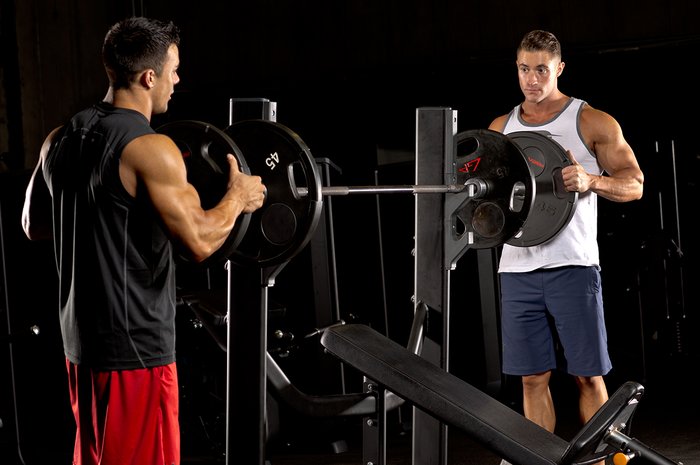
As your strength increases, you’ll be able to do more reps with a given weight. But instead of just adding more reps, put more weight on the bar once you reach 12 two workouts in a row.
Keep challenging yourself as you get stronger. Beginners often make fast gains, meaning they can perform more reps with a given weight or increase the weight on the bar. The body adapts to the training stimulus by growing bigger and stronger during the recovery phase. But as your body adapts, you need to keep increasing the degree of overload to continuing seeing continual improvements. That means you never want to get comfortable with your routine.
Don't add to these workouts. Seriously, perform them as they are for the amount of time programmed. Resist the urge to add in extra sets and exercises. Give yourself a chance to grow on this plan.
Be consistent. Pick your approach, stick with it consistently, and you should see gains in both chest size and strength on this plan. Once your gains start to stall or you're ready for a new training stimulus—usually after about three months—you're ready to progress to intermediate chest training.
When that time comes, you'll add exercises use multiple angles, and start including intensity-boosting techniques that extend sets and make training more challenging. When you're ready, dive into our best intermediate chest workouts!


